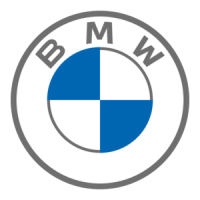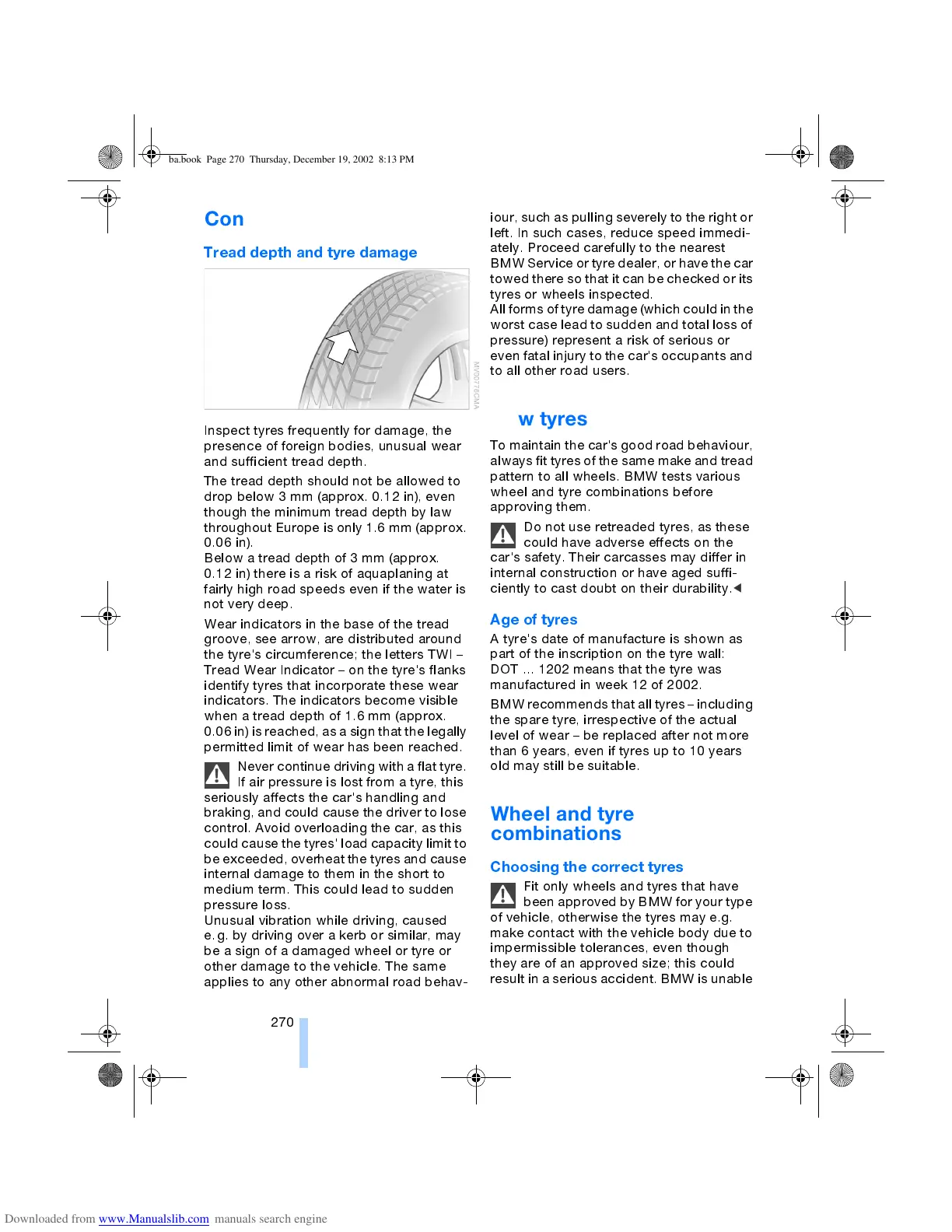Wheels and tyres
270
Condition of tyres
Tread depth and tyre damage
Inspect tyres frequently for damage, the
presence of foreign bodies, unusual wear
and sufficient tread depth.
The tread depth should not be allowed to
drop below 3 mm (approx. 0.12 in), even
though the minimum tread depth by law
throughout Europe is only 1.6 mm (approx.
0.06 in).
Below a tread depth of 3 mm (approx.
0.12 in) there is a risk of aquaplaning at
fairly high road speeds even if the water is
not very deep.
Wear indicators in the base of the tread
groove, see arrow, are distributed around
the tyre's circumference; the letters TWI
Tread Wear Indicator on the tyre's flanks
identify tyres that incorporate these wear
indicators. The indicators become visible
when a tread depth of 1.6 mm (approx.
0.06 in) is reached, as a sign that the legally
permitted limit of wear has been reached.
Never continue driving with a flat tyre.
If air pressure is lost from a tyre, this
seriously affects the car's handling and
braking, and could cause the driver to lose
control. Avoid overloading the car, as this
could cause the tyres' load capacity limit to
be exceeded, overheat the tyres and cause
internal damage to them in the short to
medium term. This could lead to sudden
pressure loss.
Unusual vibration while driving, caused
e.g. by driving over a kerb or similar, may
be a sign of a damaged wheel or tyre or
other damage to the vehicle. The same
applies to any other abnormal road behav-
iour, such as pulling severely to the right or
left. In such cases, reduce speed immedi-
ately. Proceed carefully to the nearest
BMW Service or tyre dealer, or have the car
towed there so that it can be checked or its
tyres or wheels inspected.
All forms of tyre damage (which could in the
worst case lead to sudden and total loss of
pressure) represent a risk of serious or
even fatal injury to the car's occupants and
to all other road users.
<
New tyres
To maintain the car's good road behaviour,
always fit tyres of the same make and tread
pattern to all wheels. BMW tests various
wheel and tyre combinations before
approving them.
Do not use retreaded tyres, as these
could have adverse effects on the
car's safety. Their carcasses may differ in
internal construction or have aged suffi-
ciently to cast doubt on their durability.
<
Age of tyres
A tyre's date of manufacture is shown as
part of the inscription on the tyre wall:
DOT ... 1202 means that the tyre was
manufactured in week 12 of 2002.
BMW recommends that all tyres including
the spare tyre, irrespective of the actual
level of wear be replaced after not more
than 6 years, even if tyres up to 10 years
old may still be suitable.
Wheel and tyre
combinations
Choosing the correct tyres
Fit only wheels and tyres that have
been approved by BMW for your type
of vehicle, otherwise the tyres may e.g.
make contact with the vehicle body due to
impermissible tolerances, even though
they are of an approved size; this could
result in a serious accident. BMW is unable
ba.book Page 270 Thursday, December 19, 2002 8:13 PM

